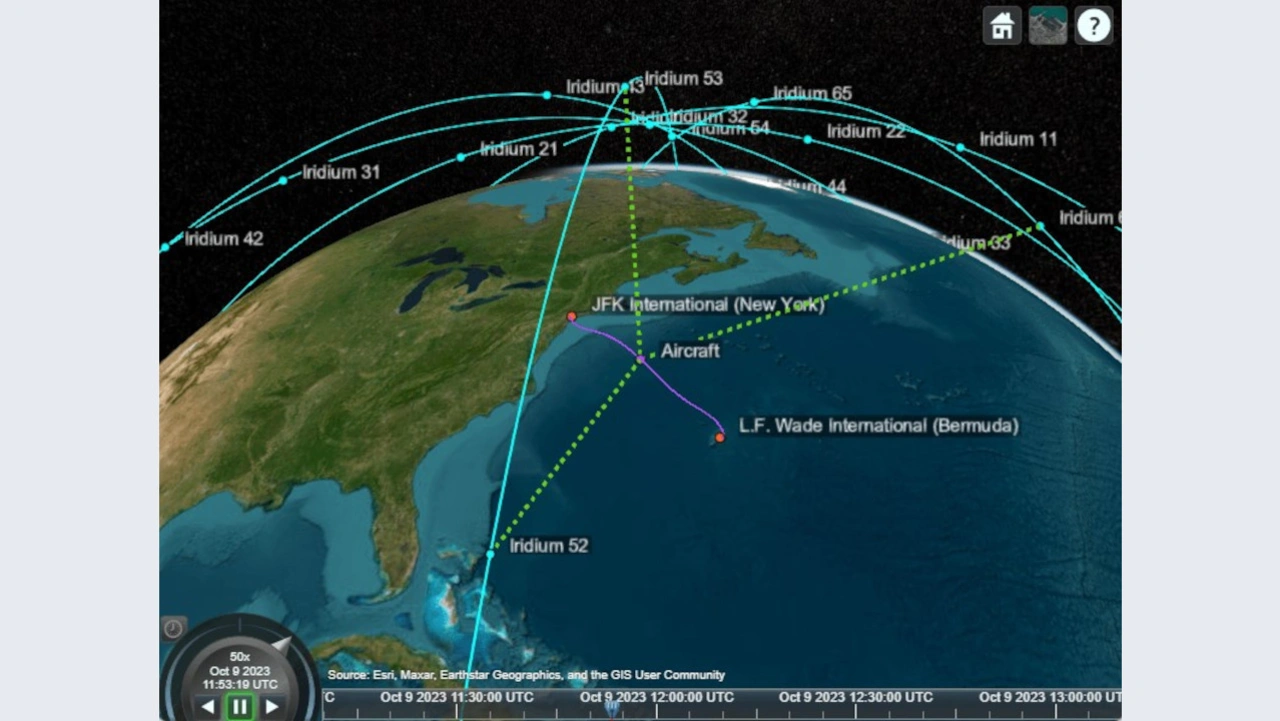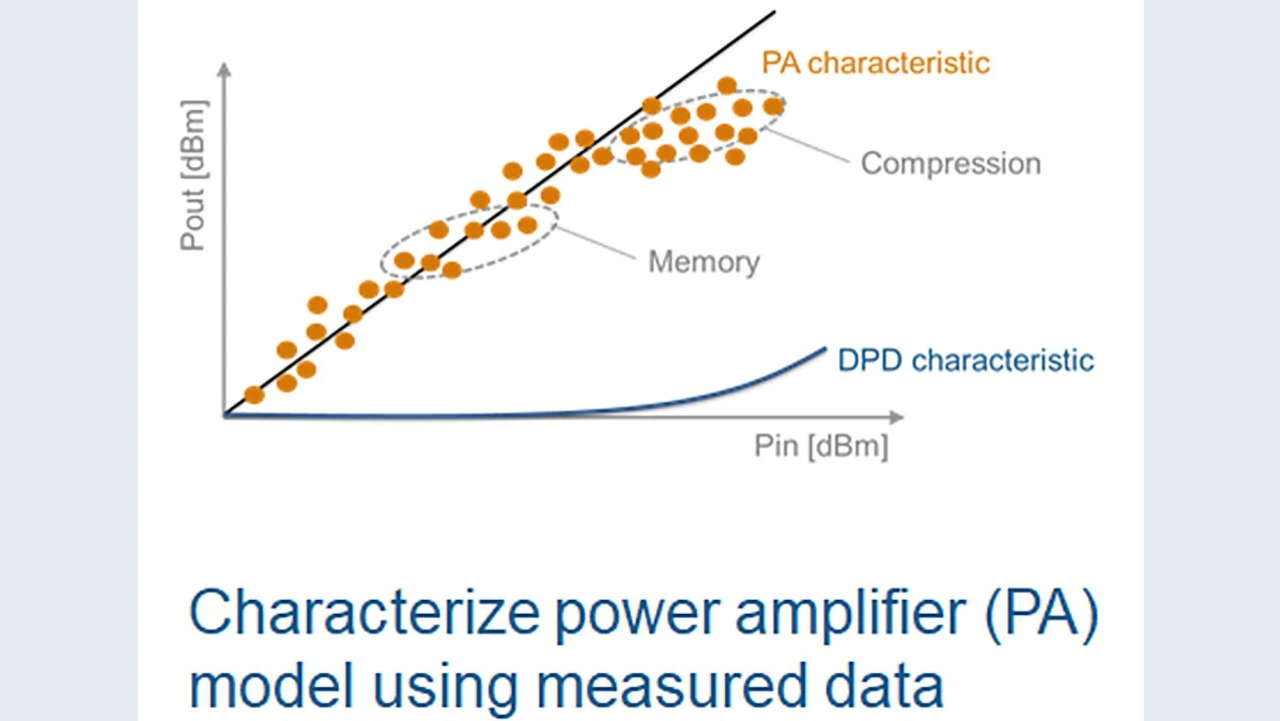LEO Satellite Communication
The Key to LEO Satellites System Design
Failures of terrestrial communication systems due to disasters have shown a large public the advantages of satellite communication. Interest in the cheaper low-orbit satellites is growing - among companies and users. However, developers should bear a few things in mind.
Interest and investment in commercial space satellite systems are booming. Private investors have injected more than $23.5 billion in private-sector funding into space-related companies [1] since 2021, and tech giants like SpaceX and Amazon (Kuiper) have launched space initiatives to increase global broadband access.

Historically, satellite communications have been used for voice communication, defense, and space exploration; however, the introduction and proliferation of Low-Earth Orbit (LEO) satellites has lowered the financial barrier required to launch satellites and opened the door for new use cases. This economic benefit is due to two factors:
- the satellites’ size – the latest Starlink LEOs from SpaceX are as small as a kitchen table – and
- multiple LEOs can be launched simultaneously. However, while LEOs make satellite communications systems more economically viable, they introduce complexity and require engineers to manage higher Doppler shifts, interference, and network complexities.
Trends Driving Satellite Communications Systems Adoption
Ubiquitous connectivity – an environment where devices can create, share, and process data from virtually anywhere – is one of the key trends driving the adoption of LEOs. Despite the progress in building the terrestrial wireless communications infrastructure, significant portions of the world, such as rural communities and oceans, remain devoid of cellular connectivity due to cost or geography. Satellites are a critical enabling technology in the wireless industry’s work toward closing the connectivity gaps between urban and rural areas.
In addition to cellular accessibility, LEOs can also improve cellular capacity. Consider the following market data from Statista: there are currently 4.6 billion smartphone users worldwide [2], and the number of Internet-connected devices is expected to reach more than 29 billion worldwide by 2030 [3]. More and more people are using the Internet, increasing the global cellular system demand. Wireless companies continue to invest in terrestrial infrastructure as commercial satellites have not always been cost-effective; however, the cost of LEOs is decreasing, making them a viable option to address the increasingly limited bandwidth, especially in remote areas.
Finally, disaster recovery communications are a key trend driving satellite communications adoption as extreme weather events are becoming more powerful and frequent [4]. Cellular infrastructure is frequently knocked out during these events, prompting satellite activation to ensure first responders, government officials, and residents can broadcast and receive critical safety information. This use case was validated when Starlink positioned 120 satellites over Southwest Florida and other areas affected by Hurricane Ian when terrestrial cellular infrastructure was destroyed [5].
Signal Latency and Power Amplification
Before LEOs, satellite communications systems primarily used Geostationary Earth Orbit (GEO) satellites. Three GEO satellites, properly spaced in longitude and revolving at the same rate as the rotation of Earth, can provide virtually full Earth coverage. Three GEO satellites can cover the planet with a few crosslinks but, unfortunately, are more expensive to build and launch than LEOs. Further, GEO satellites’ distance from the ground and each other introduced latency in their signals. While GEO satellites are acceptable for email and other non-real-time communications, phone and video calls experience significant delays that impede natural communication.
Signal delays are much shorter with LEOs because they are closer to the Earth’s surface. However, transmitters need more power to communicate with LEOs than terrestrial networks. This is because terrestrial network signals travel between 5-10 kilometers while LEO signals travel up to 2000 kilometers and suffer more signal loss.

LEOs’ diminutive size is both a boon and a design challenge. LEOs’ power amplifiers (PAs) must be physically small yet have enough power to transmit a signal to their intended target. In an ideal world, satellite engineers want PAs to have a linear characteristic even when driven with high-power inputs. However, the figure below shows that PAs driven too hard can significantly distort signals. Digital predistortion (DPD) subsystems in the transmitter can counteract these distortions.
DPD applies an “inverse PA” characteristic to the signal that causes the output signal of the PA to be more linear. DPD tools, such as those in Communications Toolbox [6], are increasingly using AI to improve results.
RF Links, Optical Links, and Phased Arrays
Interference also presents a challenge when using LEOs for satellite communications systems. The top reason is the simple fact that there are nearly 6,000 LEOs in orbit currently [7].
Traditional RF links have long been used in satellite communications systems, but engineers increasingly choose optical links when possible. Optical beam patterns are much narrower than traditional RF links, whose broad beams can spill over into other receivers and cause interference. Interference from optical systems is significantly reduced due to limited signal spreading.
Finally, satellite engineers can also use phased arrays, which are groups of computer-controlled antennas that create a beam that can be electronically steered to point in different directions. Phased arrays can spatially null out interference and direct energy at a particular spot on the ground. Phased array systems maximize beam energy in the direction of the signal of interest and insert beam nulls in the direction of interference, thus maximizing signal to interference plus noise ratio (SINR).
Doppler Effect and Frequency Shift
Unlike GEOs, LEOs do not revolve around the Earth at the same rate as the planet’s rotation. This means that they’re constantly moving either toward or away from receivers. This movement creates a Doppler effect that satellite engineers must manage.
In engineering terms, the Doppler effect refers to the difference in frequency between the transmitted wave and the received wave due to transmitter or receiver motion. Doppler challenges require satellite engineers to acquire and track LEOs’ continually changing center frequencies.
The transmitter and receiver’s frequency and phase must be completely locked in to ensure the waveforms are successfully demodulated. However, large Doppler shifts cause the frequency, phase, and timing to be out of sync. As a result, multiple closed loops must be implemented in these receivers to eliminate Doppler-induced frequency offsets. Synchronization must happen at the frame, symbol timing, carrier frequency, and carrier phase levels.
Conclusion
Many satellite engineers use reference receiver designs from products such as MATLAB [8], so they don’t need to reinvent the wheel constantly. With minor customization from the reference designs, satellite engineers can design robust receivers that can operate in challenging RF environments.
LEOs have received their fair share of attention because of their compelling short- and long-term use cases. Companies like Apple are already tapping into satellite communications networks, and that’s only the start. As satellite communications continue influencing the wireless industry, engineers should familiarize themselves with their uses, challenges, and enabling technologies.
The Autor

Mike McLernon
is an advocate for communications and software-defined radio products at MathWorks. Since joining MathWorks in 2001, he has overseen the development of numerous PHY layer capabilities in Communications Toolbox, and of connectivity to multiple SDR hardware platforms. He has worked in the communications field for over 30 years, in both the satellite and wireless industries. Mike received his BSEE from the University of Virginia and his MEEE from Rensselaer Polytechnic Institute.
mmclerno@mathworks.com
- The Key to LEO Satellites System Design
- Literature











